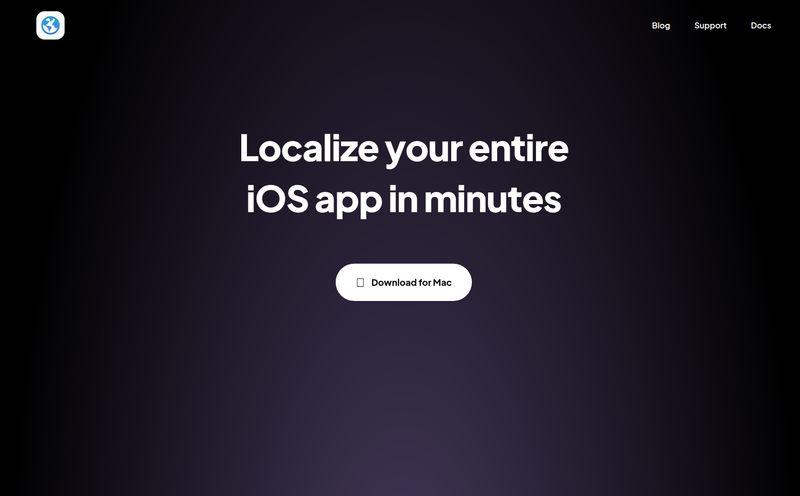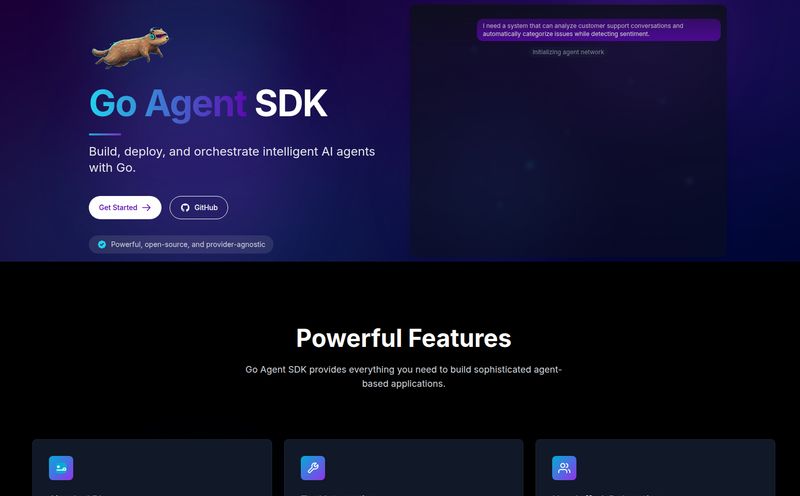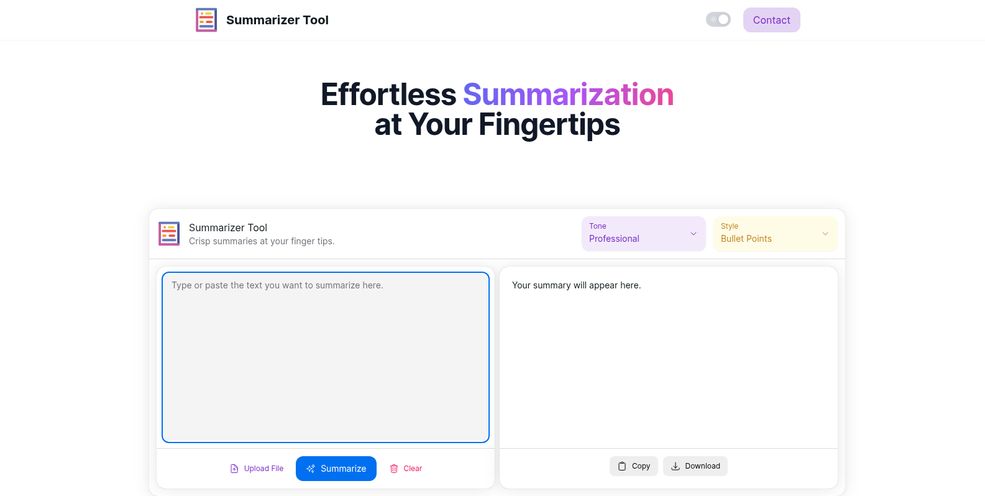I’ve been in the digital marketing and SEO world for what feels like an eternity. I’ve seen tools come and go, promising the moon and delivering, well, a lump of green cheese. So, whenever a new platform pops up screaming "AI-powered revolution!", my inner cynic just rolls his eyes and orders another coffee. It’s a defense mechanism, you know?
But every now and then, something cuts through the noise. Lately, the buzz has been around AI-driven translation, specifically for complex documents. We've all been there, right? Trying to translate a client's PDF or a technical manual using the old copy-paste-into-Google-Translate method. It’s clunky. It’s messy. And the results? Often hilariously, or dangerously, wrong.
Enter DocTransGPT. The name itself tells you what it's about: Document Translation, powered by the same brainy tech behind ChatGPT. My curiosity got the better of my cynicism. I had to see if this was just another shiny object or a genuinely useful tool for professionals. So, I spent some time with it, and let's just say, I have some thoughts.
So What Exactly is DocTransGPT?
At its heart, DocTransGPT is a specialized translation app. But instead of using older, more rigid translation models, it plugs directly into OpenAI’s powerful large language models—specifically GPT-3.5, GPT-4, and the new speed demon, GPT-4o. Think of it this way: if traditional translators are like a pocket dictionary, DocTransGPT is like having a conversation with a native speaker who’s also an expert in your field. It doesn't just swap words; it tries to understand context, tone, and intent. This is a pretty big leap.
It’s designed to tackle the stuff that makes other tools sweat: chunky PDFs, formatted Word documents (DOCX), and even PowerPoint presentations (PPTX). For anyone who works with international clients or teams, that last one is a big deal. No more rebuilding slides from scratch. Hallelujah.
A Look at The Features That Caught My Eye
Okay, let's get into the nitty-gritty. A tool is only as good as its features, and DocTransGPT has a few that are genuinely interesting.

Visit DocTransGPT
Document Versatility is a Lifesaver
The ability to just drag and drop a PDF, DOCX, or PPTX file is, frankly, how it should have always been. I tested it with a fairly complex marketing report I had, complete with charts and weird formatting. DocTransGPT ingested it without a hiccup and maintained the layout pretty darn well in the translated version. This alone saves a ton of tedious reformatting work.
You Can Actually Direct the Translation
This is probably my favorite part. You can give the AI instructions. You can specify the domain (e.g., 'legal', 'medical', 'tech'), the tone ('formal', 'friendly', 'humorous'), and even the writing style. It’s like being a movie director for your text. I translated a casual blog post into German, first asking for a 'formal' tone, and it came back sounding very professional and a bit stiff. Then I ran it again asking for a 'friendly' tone, and the output was noticeably more conversational. That level of control is something I haven't seen executed this smoothly in many other places.
Choosing Your AI Brain
The platform lets you select which AI model you want to use. You can choose from options like GPT-4 for maximum quality or the newer GPT-4o, which promises a similar level of smarts but at a much faster speed. This is smart because it lets you balance cost, speed, and quality. For a quick internal draft, maybe the faster model is fine. For a final client-facing document, you'll want the most powerful brain on the job. Having that choice is empowering.
Putting It Through Its Paces: The Good and The Not-So-Good
I ran a few different documents through the system—a technical SEO audit, a creative brief, and a few pages from an ebook. Here's how it shook out.
The Good Stuff: Speed and Accuracy
The speed is impressive, especially with the newer models. A 10-page document was turned around in what felt like a minute or two. But speed is useless without accuracy, right? For the most part, the accuracy was fantastic. It handled industry jargon (like 'SERP volatility' and 'canonicalization') with surprising grace, translating the concept rather than just the literal words. For 90% of professional tasks, the quality is more than good enough, and frankly, better than I expected.
A Necessary Reality Check
Now, it's not perfect. No AI is. The platform itself warns that custom prompts can sometimes lead to wonky results if you're not specific enough. I found this to be true. When I gave it a vague instruction like "make it sound cool," the result was a bit cringey. You have to be clear and direct with your customizations.
And the biggest caveat, which applies to ALL AI translation, is the nuance problem. AI can't truly understand culture, deep-seated idioms, or the subtle poetry of language. It can mimic it incredibly well, but for high-stakes marketing copy or sensitive legal documents, you'll still want a human to do the final review. Think of DocTransGPT as the world's best junior translator—it does 95% of the heavy lifting, but the final polish should come from a seasoned pro.
How Does it Stack Up Against Google Translate?
This is the question everyone asks. And it’s a fair one. My take? It's not even the same sport. Google Translate is amazing for a quick translation of a menu in a foreign country or a simple email. It's a statistical machine. DocTransGPT, by using LLMs, feels more like a generative machine. It's creating a new document in another language that honors the original's intent. For translating entire documents where context and tone are important, DocTransGPT is in a different league.
| Feature | DocTransGPT | Google Translate (Standard) |
|---|---|---|
| Contextual Understanding | High (uses GPT-4 models) | Moderate (improving, but more literal) |
| Document Formatting | Preserves PDF, DOCX, PPTX layouts | Basic, often requires reformatting |
| Tone & Style Control | Yes, highly customizable | No |
| Best For | Professional documents, reports, presentations | Quick text snippets, web pages, casual use |
The Million-Dollar Question: What's the Pricing?
And here's where we hit a small, slightly comical roadblock. As of this writing, when I tried to visit their pricing page... I was greeted by a friendly 404 error. Page not found. Whoops. Happens to the best of us, I suppose!
However, the platform mentions that some AI models are reserved for a premium plan. This strongly suggests a freemium model. You'll likely get a certain amount of free translations, perhaps using the base model, with premium tiers unlocking the more powerful models like GPT-4o, larger file sizes, or more monthly translations. For the most accurate info, your best bet is to head over to their site directly—hopefully, by the time you read this, they've found their pricing page!
My Final Verdict: Who Should Use DocTransGPT?
So, is DocTransGPT the revolution it claims to be? I'd say it's a very strong evolution. It’s a powerful, well-designed tool that solves a real, persistent problem for a lot of professionals.
I’d strongly recommend it for:
- Marketing Teams: Quickly adapting campaigns and reports for different regions.
- Small Businesses & Freelancers: Communicating with international clients without the high cost of manual translation services for every draft.
- Students and Academics: Processing research papers and source materials from other languages.
- Legal and Technical Professionals: Getting a highly accurate first draft of complex documents before a final human review.
It's not going to put human translators out of a job—not yet, anyway. The need for that final, nuanced human touch remains. But as a tool to boost productivity, break down language barriers, and handle the bulk of the work? Yeah, DocTransGPT is absolutely worth a look. It has certainly earned a spot in my digital toolkit.
Frequently Asked Questions
- 1. Is DocTransGPT truly better than Google Translate?
- For translating entire documents where context, tone, and formatting matter, yes. It uses more advanced AI models (like GPT-4) that provide more nuanced and context-aware translations compared to the standard Google Translate service.
- 2. What file types can I translate with DocTransGPT?
- It's optimized for the most common professional document formats: PDF, Microsoft Word (DOCX), and Microsoft PowerPoint (PPTX).
- 3. Is it safe to upload confidential documents?
- The platform advertises a secure translation environment. As with any cloud-based service, you should always review their privacy policy, but it’s built for professional use, which implies a higher standard of security than free consumer tools.
- 4. Is there a free version of DocTransGPT?
- While their pricing page was down during my review, the service structure suggests a freemium model. You can likely perform some translations for free, with paid plans offering access to more advanced AI models and higher usage limits.
- 5. How does the translation customization really work?
- You're given fields to input specific instructions before translating. For example, you can tell the AI the document is a 'marketing report' (domain) and that the output should be 'professional but approachable' (tone). The AI then uses these prompts to guide its translation, making it more tailored to your needs.



